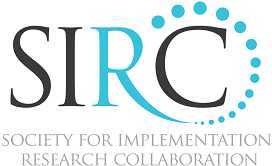Operationalizing the Consolidated Framework for Implementation Research to Guide Evaluation of a Complex Intervention and Produce Actionable Findings
Friday 1:00 – 2:15 Breakout B1
Presentor: Rosalind Keith
Rosalind Keith, Mathematica Policy Research; Jesse Crosson, Mathematica Policy Research; DeAnn Cromp, Group Health Research Institute; Ann O’Malley, Mathematica Policy Research; Michael Parchman, Group Health Research Institute
There is growing recognition of the need for researchers, decision makers, and program implementers to understand how context influences the implementation of complex interventions. The purpose of this presentation is to describe how to use the Consolidated Framework for Implementation Research (CFIR) to systematically analyze qualitative data from an implementation evaluation to produce timely, relevant, and actionable findings. We purposefully selected twenty one primary care practices for one to two day site visits to collect in-depth qualitative data about clinician and staff experiences implementing the Comprehensive Primary Care (CPC) initiative, a primary care redesign intervention. During the first year of CPC implementation, we conducted 103 interviews (approximately two to seven interviews per practice) and documented detailed field-notes after each site visit. To systematically analyze the data, we developed operational codes to delineate the intervention into five components based on CPC guidelines. We used the CFIR to develop contextual codes to guide our examination of factors that emerged to influence the implementation of the CPC components. The findings we produced were used by decision makers to identify where implementation differed from planned objectives and provide focus to technical assistance providers on the areas where additional implementation support was needed.
Applying the CFIR Constructs Directly to Qualitative Data: The Power of Implementation Science In Action
Friday 1:00 – 2:15 Breakout B1
Presentor: Edward J. Miech
Edward J. Miech, EdD, Research Scientist and Implementation Research Coordinator, VA Stroke QUERI; Teresa M. Damush, Ph.D., Research Scientist and Implementation Research Coordinator, VA Stroke QUERI
An innovative new analytic strategy for implementation-related projects is the direct application of constructs from the Consolidated Framework for Implementation Research (CFIR) to qualitative data. In May 2013 Damschroder and Lowery published the first study to assign valence (i.e., positive or negative) and magnitude (i.e., weak or strong) to individual CFIR constructs and to use these ratings to analyze association of CFIR constructs with implementation outcomes. Building on this novel strategy, an eight-person study team based in Indianapolis led by PI Miech undertook the task of systematically rating more than 300 interview transcripts generated over 33 site visits with 20 CFIR constructs for valence and magnitude as part of the VA-funded RE-INSPIRE project in 2014-15. In completing this work, the RE-INSPIRE team developed new rubrics, devised technical methods for on-demand access to CFIR-related information and pioneered the use of an Audience Response System to harness the expertise and autonomy of individual team members yet adhere to a standard of team consensus when applying CFIR constructs to RE-INSPIRE data. The direct application of CFIR constructs to qualitative data yielded original, key findings in the RE-INSPIRE project into how interventions, implementation strategies, and local contexts influenced implementation success.
Efficient and Effective SBIRT Training: A Snowball Implementation Model
Friday 1:00 – 2:15 Breakout B1
Presentor: Jason Satterfield, PhD
Jason M. Satterfield, University of California, San Francisco (UCSF); Derek Satre, UCSF; Maria Wamsley, UCSF; Patrick Yuan, UCSF; Patricia O’Sullivan, UCSF
Background/Purpose:
Medical clinics often “re-invent the wheel??? when promoting new evidence-based behavioral practices rather than building on the gains of prior implementation efforts. Our purpose was to determine if a “snowball implementation??? model with near-peer consultations and community partnerships could be effective.
Methods:
We conducted a 5 year case study of “snowball implementation??? involving 5 medical residency training programs interested in implementing screening, brief interventions, and referrals to treatment (SBIRT) for substance use disorders into their clinical practices. Each year, one program implemented SBIRT training using materials and processes developed by the prior year’s program. Qualitative interviews of key informants and review of program materials assessed important implementation processes and outcomes drawn from the CFIR framework.
Results:
All programs successfully implemented SBIRT training and systems adaptations. Early programs invested more time and resources in developing materials and processes but each program “handed off??? products and lessons learned to subsequent programs. Internal champions effectively used near-peer consultations, enabling them to design more effective and efficient program-specific implementations to successfully train residents in SBIRT.
Discussion/Conclusion:
By creating a near-peer community, programs evolved successful program-specific implementations, gleaning lessons from each other. This model could inform others regarding how to build implementations collaboratively rather than relying solely on individual strategies.
